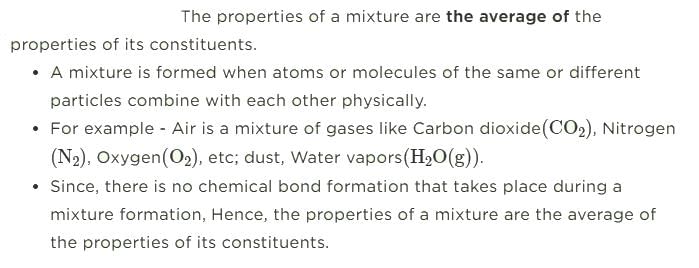Chemistry Mock Test- 3 - Class 9 MCQ
30 Questions MCQ Test - Chemistry Mock Test- 3
Which one of the following phrases would be incorrect to use?
What is the ratio of magnesium and Sulphur by mass in Magnesium sulphide?
The hardness of solids is due to the fact that their particles:
The properties of mixture are _________ from its components.
What is the basis for the classification of matter into three categories?
At what temperature does water boil and change rapidly into a gas at atmospheric pressure?
Which of the following illustrates the law of conservation of mass?
Which of the following has the highest solubility at 293 K?
Neon occurs as two isotopes of mass numbers 20 and 22. Its relative atomic mass is 20.2. What is the percentage of 20Ne in naturally occurring neon?
Which of the following elements has 17 electrons and 17 protons?
Find the symbol of an element X, if its mass number is A and atomic number is Z respectively.
The reaction used in the experiment to verify the law of conservation of masses is included in which of the following categories?
AgNO3(aqueous) + KCl(aqueous) —–AgCl(precipitate) + KNO3(aqueous)

















